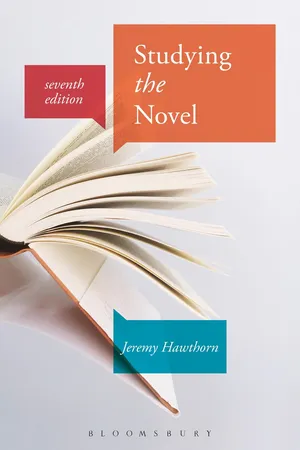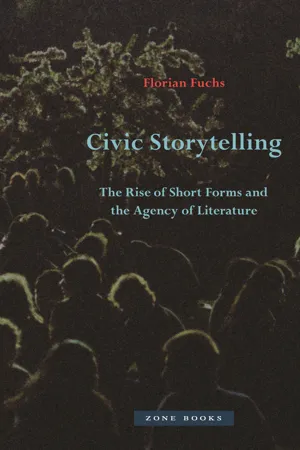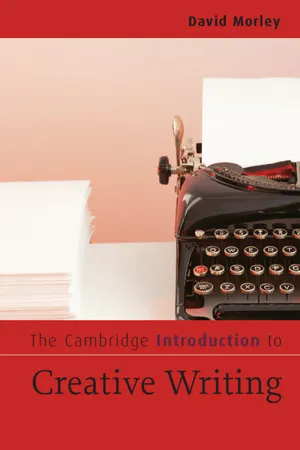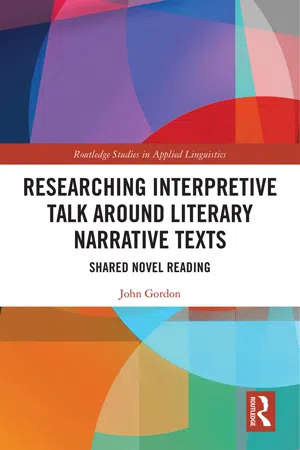Literature
Novella
A novella is a work of fiction that falls between a short story and a novel in terms of length and complexity. Typically, novellas are longer than short stories but shorter than novels, often ranging from about 20,000 to 50,000 words. This format allows for more depth and development than a short story while still maintaining a concise and focused narrative.
Written by Perlego with AI-assistance
Related key terms
1 of 5
4 Key excerpts on "Novella"
- eBook - PDF
- Jeremy Hawthorn(Author)
- 2016(Publication Date)
- Bloomsbury Academic(Publisher)
The word “Novella” is gradually gaining acceptance in English among publishers, Studying the Novel 36 writers, and latterly critics, to denote a fictional prose narrative of “medium” length. This usage is supplementing rather than supplanting “short story,” which has been firmly established since the turn of the century. The older terms “tale” and simply “story” were still employed by writers like [Henry] James and [Joseph] Conrad to refer to any narrative shorter than a novel, from about five to a hundred or more pages. (Good 1994, 148) In fact, Conrad used the term “tale” rather more promiscuously than this suggests: his longest novel, Nostromo , is sub-titled “A Tale of the Seaboard.” One of the reasons why the terms “short story” and “Novella” were pressed into use by writers and critics from (especially) the early days of the twentieth century is probably that alternative terms such as “tale” were just too elastic. Behind the search for terms is a sense that length does make a difference, and that although the cake of fiction can be cut into slices of varying sizes, a tripartite division accords well with our experience of reading fictional works varying from (say) the 1,824 words of James Joyce’s “Eveline” through the 42,700 words of Henry James’s The Turn of the Screw to the 168,000 words of Nostromo (and there are many novels that are longer by far than Nostromo ). Although not all commentators are happy with these terms or the categories they propose, I will use them in what follows to structure my comments since the tripartite division between novel, Novella, and short story possesses a certain utility and convenience. Most if not all of the novels written since 1800 that you are asked to study will have been written by authors who had a relatively clear sense of what a novel was. But the same cannot be said of the short story or, especially, the Novella. - eBook - ePub
Civic Storytelling
The Rise of Short Forms and the Agency of Literature
- Florian Fuchs(Author)
- 2023(Publication Date)
- Zone Books(Publisher)
This agency of the Novella, as well as its being focused only on events and action, also entail a specific plot economy. Novellas are short because the goal of their narrative economy is to achieve a feasible, truthful intervention with the least necessary means, that is, with the most compact and shortest story. Rather than being potentially infinite, like a novel, which can always add to its world more characters, events, or descriptions, the number of sentences in a Novella must be great enough to depict its truthful incident or action, but not so great as to compete with the existing reality of the reader. Hence, the length of a Novella is kept in a range so that it can be read in a single sitting, fitting like a single, erratic incident within the tapestry of discrete events in an afternoon’s or evening’s experience, a temporal interruption now collated into a reader’s lived reality. This temporal economy inscribed into the Novella form means that Novellas come with an inherent impatience that is exhibited by its limited character development and the fast pace of its plot. They have to be quick enough to make an incision in our world by bringing us in contact with an unheard-of event.The phenomenological difference between novel and Novella developed from Blumenberg’s definition of the former, the difference between simulation of a world and intervention into a world, could thus also be described by the Novella’s “thatness”: “What happens in these texts often seems far less important than that it happens.”5 For these reasons, the Novella is the paradigmatic example of the specifically disruptive and thus active manner in which brief narrative forms can enter and provoke the reader’s reality. While not all Novellas or short narrative forms fit this definition, the ability to interfere actively in existing realities is the most consequential outcome of their formal existence. They demonstrate the interventional power short narrative forms can develop when they are specifically constructed according to their interventional economy. With that ultimate act in mind, a fictional event in a text can be transformed into a true occurrence in a life when it provokes questioning - David Morley(Author)
- 2007(Publication Date)
- Cambridge University Press(Publisher)
Write your tale from the point of view of a person involved in that news, using the third-person point of view (‘he’ / ‘she’) and the given setting of the event. A I M : This five-finger exercise encourages you to fictionalise a single aspect of reality. It allows you to get to grips with writing a story because you have already been given setting and, to some extent, character. The practice of fiction 159 Novella Some new writers choose the Novella form to find their voice before writing a full-length novel, gathering maybe three or four Novellas together between one cover as a means of setting out their stall. A Novella is a short novel, commonly fifty to a hundred pages long. This allows greater character and theme devel- opment than a short story, without the intricate structural exigencies or the Niagaran tightrope walk of a novel. It offers the concentration of a short story and the wider compass of the novel’s form. Some critics have imposed a word count on where the Novella stops and a novel begins. Thinking about numbers is counter-productive when writing a Novella – ‘an ill-defined and disreputable literary banana republic’, as Stephen King calls the form – although 40,000 words seems a sensible target for a new writer. Novellas are similar in structure to short stories, in that they often open with an event, but may then move backwards in time to give background material. They also frequently place a change of direction, such as a reversal of fortune or a new event, within the rising action.- eBook - ePub
Researching Interpretive Talk Around Literary Narrative Texts
Shared Novel Reading
- John Gordon(Author)
- 2020(Publication Date)
- Routledge(Publisher)
3 Novels, Narratives and Narratology3.0 Introduction
The novel is a narrative form. When readers talk or write about how novels tell a story they perform narratology. This chapter defines and explores the terms novel, narrative, narration and narratology, first understanding them as they conventionally apply to the discipline of literary study and then relative to teaching and learning. It proposes that when teachers guide learning around novels they create new narratives, articulated across the teaching sequences by which novels are presented. These narrations deserve their own specialised account. The focus of this book is how teachers mediate students’ experiences of study novels, and its aim is to develop a new narratology that helps us explain teachers’ narrative activity in their own talk and classroom practice, relative to novels already subject to the established narratologies of literary studies as an educational discipline. This is a project consistent with a gradual broadening of attention recognising that thestudy of narrative is no longer the province of literary specialists or folklorists borrowing their terms from psychology and linguistics but has now become a positive source of insight for all the branches of human and natural science.(Mitchell, 1981, p. 3)Considering novels and their presentation in education is to reflect on the relationship between novels and knowledge, and on how teaching frames and realises the form’s educative potential. If narratives constitutea mode of knowledge emerging from action, a knowledge which is embedded not just in the stories we tell our children or to while away our leisure but in the orders by which we live our lives, (Mitchell, 1981, p. 3)whatever learning children enjoy from their experience of novels in schools is shaped both by stories in print and by unique classroom mediations of them formed in each exchange between text, teacher and students. The value of novels in education must be as much a matter of pedagogy as one of curriculum or canon.
Index pages curate the most relevant extracts from our library of academic textbooks. They’ve been created using an in-house natural language model (NLM), each adding context and meaning to key research topics.



